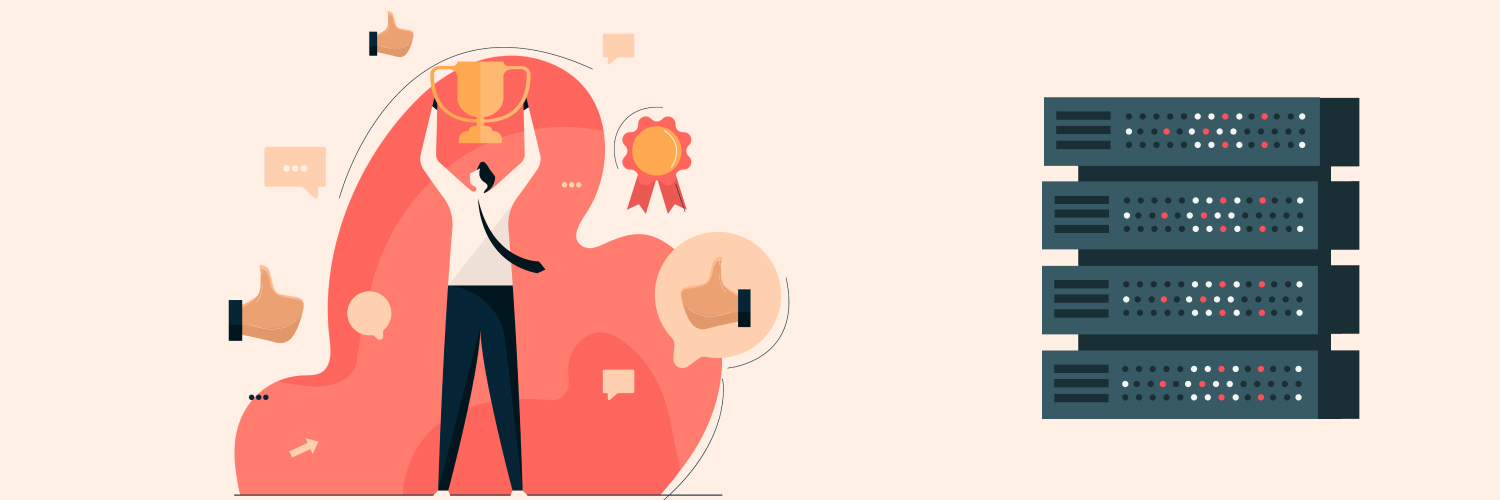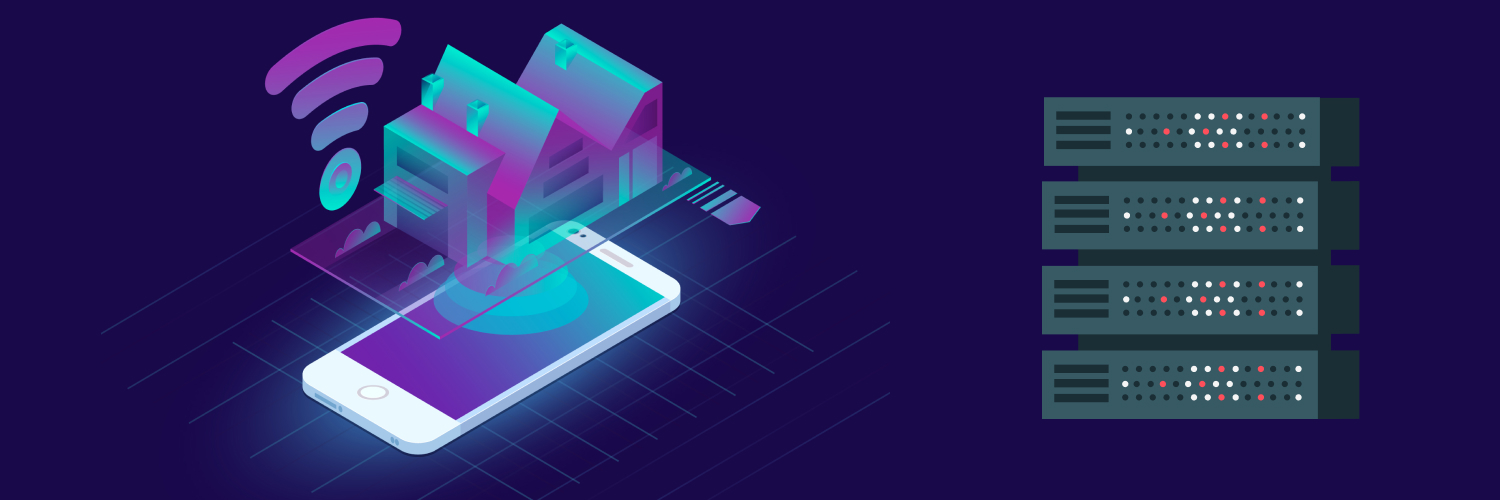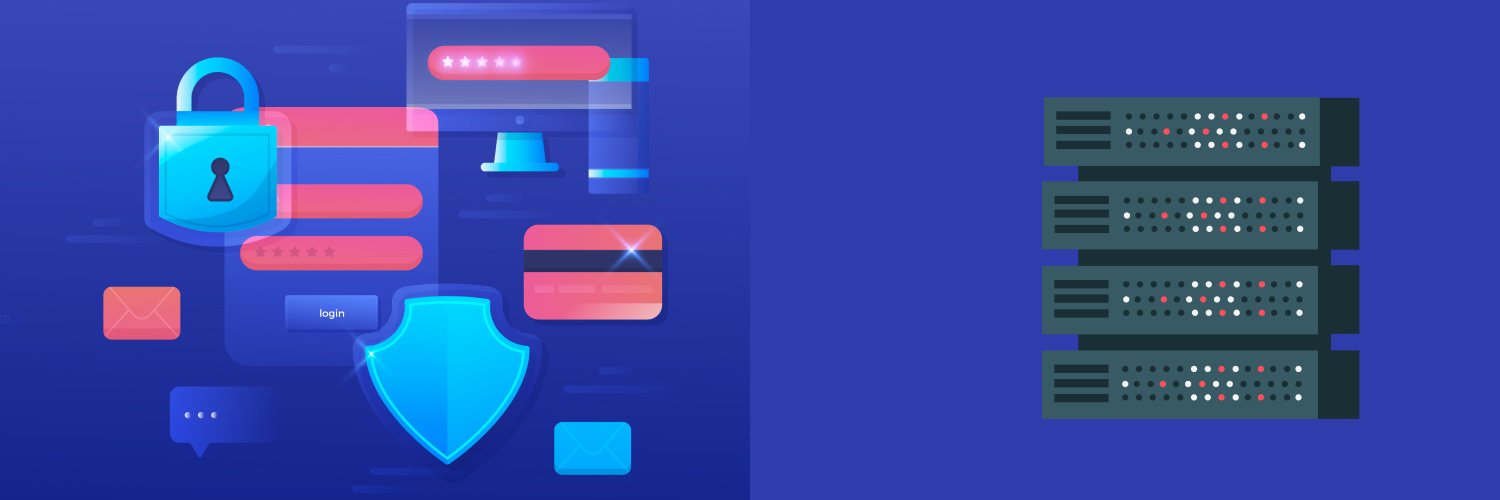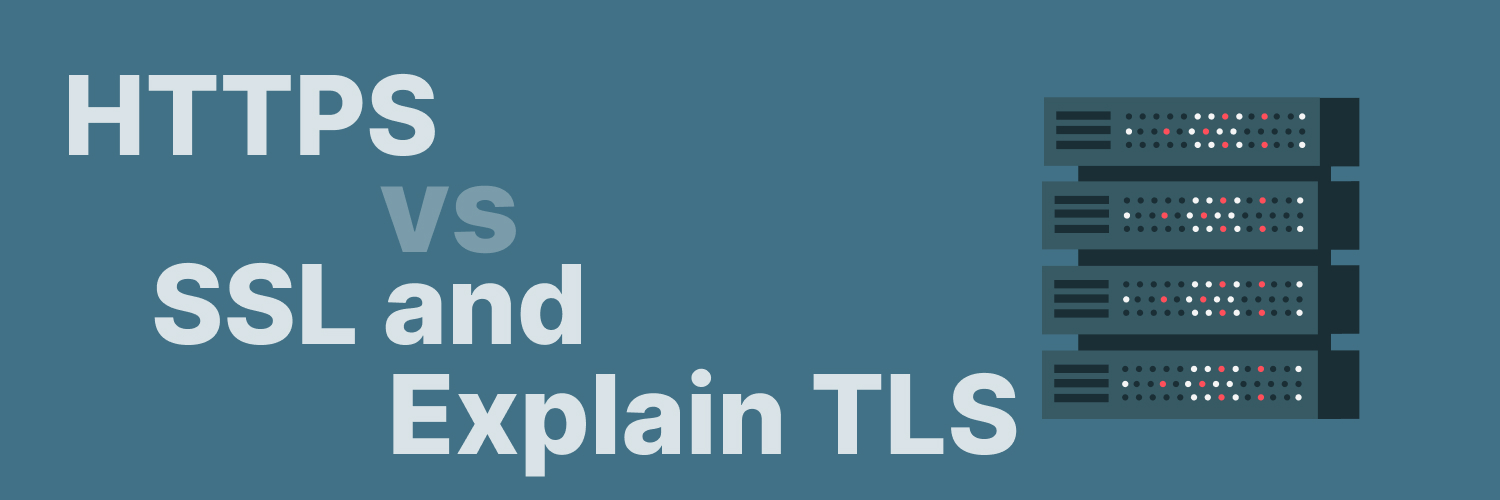HTTP Request Headers 101: Everything You Need to Know
Efficient desktop research through web scraping requires some ins and outs you simply can’t skip. A better understanding of HTTP request headers, for example, can level up your web scraping game.
You know how tricky web scraping can be. Researching the web can be a daunting task, especially when you are looking at thousands of external sources. Small to mid-sized companies often don’t have the resources to dedicate to research activities, but in some cases, it’s necessary for the businesses to function well. That’s why web scraping and proxy servers are required.
Web scraping literally means scraping the web: extracting information from websites either manually or through automation. As you already know, web scraping is faster than reading dozens of web pages individually, and is often the ideal process for quickly pulling data in scale (from hundreds or even thousands of sources). However, as the need for more information grows, manual web scraping becomes less efficient. Automation, on the other hand, requires a bit more expertise and dutiful care to ensure everything runs smoothly once left alone.
Let’s quickly dive into HTTP request headers to briefly demonstrate how it works, and then cover all the fundamentals we require from there.
HTTP Header Examples

What are HTTP headers and where do they fit into the web scraping equation? Understanding various HTTP headers’ purposes lets you optimize them for your use. And through optimizing HTTP headers, you can make your web scraping more efficient.
In the same way that using proven resources and techniques like a proxy and rotating proxies (or IP rotation) will greatly increase your chances of success, using — and optimizing — request headers is an often overlooked but helpful technique. Optimizing request headers can decrease your web scraper’s chance of getting blocked by wherever data sources you’re scraping, while also ensuring that the data you retrieve is high quality.
HTTP request headers are important for web scraping because they can be used to specify the format of the data that you want to receive, and can also be used to control how your scraper interacts with the website.
When you make a request to a website, the headers that you include in the request can be used to specify things like the format of the data you want to receive, or how your scraper should interact with the website.
For example, if you know that a particular website only serves data in JSON format, then you can use headers to tell your scraper to only accept JSON data (via HTTP_accept headers). This will help prevent your scraper from trying to parse HTML data, which would likely fail.
Likewise, if you know that a website is configured to block requests from scrapers, then you can use headers in your request that identify your scraper as a friendly bot. This may allow your scraper to bypass any restrictions and successfully scrape the site.
You can view HTTP header in IE or your preferred browser through its developer tools, but here’s an example HTTP request header that specifies that the data should be returned in JSON format.
GET /some-data HTTP/1.1
Host: www.example.com
Accept: application/json
The exact process for configuring request headers will vary depending on the web scraper that you’re using. However, most web scrapers will allow you to specify headers in the request settings.
For example, if you’re using the Python library Scrapy for your web scraping needs, you can specify headers using a Python dict like this:
HEADERS = {‘Accept’: ‘application/json’}
Don’t worry if it’s rather alien at the moment. By the end of the article, it should make more sense. This guide discusses what HTTP headers are, why they are essential when web scraping, and how to secure your web app with various request headers, among other things. The article will also include other useful HTTP header examples. At the end of this article, you should better understand how to set HTTP header types.
What is HTTP, Anyway?

Let’s back up and start from the top.
Hypertext Transfer Protocol (HTTP) is an application protocol for distributed, collaborative, and hypermedia information systems. HTTP is the foundation of data communication for the World Wide Web. Hypertext is structured text that uses logical links (hyperlinks) between nodes containing text. HTTP enables clients to connect to servers and request information from them. Web browsers request resources such as HTML documents and image files from web servers; web servers fulfill requests by sending back requested resources. A client can also submit a request to change or update data on the server, which may trigger server-side scripts to perform additional processing before returning updated data to the client.
In layman’s terms, HTTP is a method used to transfer data between a server and a client. The client, typically a web browser, sends an HTTP request to the server for resources such as HTML documents or images. The server then responds with the requested resource or an error message, if it cannot fulfill the request.
When you type a URL into your web browser, your computer sends an HTTP request to the server for the appropriate website. The server then sends back an HTTP response that contains the requested data. For example, if you open Chrome and type in facebook.com, your browser sends an HTTP request to Facebook’s server. In response, it then opens up Facebook for you.
HTTP is stateless, meaning each request from the client is independent of any other request. That is, the server does not need to remember any information about previous requests to process the current request. Each request contains four key elements:
- a URL
- an HTTP method (e.g., GET or POST)
- HTTP headers
- A message body
These requests are used in web scraping to actually do the scraping by sending requests and parsing the responses received. By automating the process of sending HTTP requests, you can repeatedly extract text, images, and entire webpages worth of code like web scrapers.
Why Use HTTP for Web Scraping?

Now that we know the basics, why exactly is HTTP ideal for web scraping, specifically? What are the advantages and disadvantages?
HTTP is often quick and easy to set up for the purposes of scraping websites. HTTP is a popular protocol for web scraping due to its simplicity. HTTP is quite well-known and often used that there are many tools and libraries available. These make working with HTTP much simpler than trying to scrape data using other protocols or methods. In the same vein, most websites would easily support HTTP requests without you needing to do extra work.
Using an HTTP-based API is also quite easy because they are widely used and well-documented. Many popular websites have HTTP-based APIs that can be used by developers to access their data and content programmatically. For example, any social site Graph API allows developers to access data about users, pages, and events on social site. Because HTTP-based APIs are so well-documented, it’s easy to find information on how you can programmatically use them for your own purposes, such as web scraping. HTTP is perfect for beginners and users that are not very technically inclined as they can easily search for ways they can DIY their projects and even troubleshoot issues.
The HTTP request/response structure is easy to use for the automated parsing of the data you scrape from websites. For instance, if a website uses pagination controls via “Previous” and “Next” buttons, you can use HTTP requests to parse these to be able to automatically navigate all the web pages you want to scrape. You can also use HTTP requests to parse HTML responses in a way that you can extract relevant session cookies to use in subsequent requests. This way, you can bypass a required login process that would otherwise prevent your scraper from obtaining the required information.
HTTP traffic is unencrypted, which means it can be intercepted and viewed while in transit. This accessibility to the information can be useful for debugging purposes and understanding how a particular website is coded. To understand how a website works, you need to learn about its HTML code behind the scenes. To scrape data effectively, you must have a good understanding of its HTML structure since HTTP request methods usually aren’t very flexible when scraping data directly from web pages. If you encounter difficulty when trying to scrape data, more information will usually help resolve the issue.
HTTP connections are beneficial for web scraping operations because they are persistent, which means they can remain open for multiple requests and responses. Keeping these lines open can significantly speed up the scraping process. You can leverage the HTTP request header keep-alive (more on this later) to use a single connection through which you can make multiple requests. That’s even more overhead reduced. Additionally, you can even reuse connections and implement caching mechanisms. This way, you guarantee that your web scrapers are minimizing the amount of data transferred as you keep connections open.
When is HTTP Not Ideal for Web Scraping?

Alright, so those are the pros; what are the cons? Are there cases where using HTTP might not be the best approach for web scraping? Well, let’s look at the following:
You need more efficient, scalable methods. HTTP is simply not as efficient nor as fast as say the WebSocket protocol. It’s definitely the most widely used, but because HTTP was designed for humans accessing information over the web, its structure is inherently inferior to protocols designed for machines to use to access information on the web. HTTP was meant for human-to-machine interaction, whereas other protocols like WebSocket are meant for machine-to-machine communication. So, you might notice as you send an increasing number of HTTP requests that your overhead starts to grow considerably, and scraping slows down overall as a result. It’s not a huge issue at certain scales, but for larger projects, you’ll need some workarounds, at the very least.
You need to scrape websites that use dynamic content. Static websites contain all the information in their HTML code, and you can easily take what you need with a web scraper. Dynamic websites use JavaScript and other languages and technologies to deliver content to their users in a way where it’s accessed elsewhere, usually in a database that’s abstracted away from the HTML code, which is what you are checking. So, when you use HTTP to scrape these sites, you’ll only get the HTML code, JavaScript, and where the content is coming from — not the content itself. Dynamic sites also tend to update their content frequently, even while you’re on it, or in this context, while your scraper is busy crawling it. These changes can, at worst, break your web scraper, or at least, send back inaccurate information. In the same vein, HTTP isn’t great at handling servers that require authentication before sending back HTTP responses.
Bottom-Line: Best for Static Websites
In conclusion, HTTP is generally considered to be ideal for web scraping if you’re going to be scraping static data. HTTP requests tend to be less prone to being blocked by security measures compared to other types of requests. The data returned by the server you’re sending requests to should be well-structured. Overall, extracting static content from websites is a straightforward task via HTTP, especially since it’s more ubiquitous with near universal support, and if you’re less technical or only a beginner, it’s easier to work with. However, as mentioned earlier, there are some non-negotiable limitations applicable to HTTP for web scraping, particularly dynamic content, authentication measures, and content that updates in real-time.
Now that we’ve got the basics covered, let’s dive into HTTP request headers, specifically.
Understanding HTTP Headers

Remember our quick example above of an HTTP request header? Let’s break that down.
GET /some-data HTTP/1.1
Host: www.example.com
Accept: application/json
The first line is the request method, URI and protocol version. The aptly named get method (typically stylized GET) is an HTTP method used to request data from a specified resource. The URI specifies the location of the resource, and the HTTP/1.1 protocol tells the server which version of HTTP you are using. In the example above, /some-data is the URI, while the protocol version is HTTP/1.1.
The next two lines are headers that provide additional information about the request. The host header tells the server which domain you are trying to access, and the Accept header specifies that you want to receive data in JSON format.
This HTTP request, in essence, tells www.example.com to get you /some-data via the HTTP/1.1 GET method and return it to you in JSON format.
There are various headers you can use in HTTP, such as ones that specify what browser you’re using or whether you want to receive compressed content. Headers can make a lot of specifications that you and the server you’re communicating with can use to transfer contextual information or instructions back and forth.
Types of HTTP Headers

HTTP headers can be grouped based on their context, and below are some of the foremost ones you’ll probably want to know better to improve your web scraping.
HTTP request header
An HTTP request header is a line of text that contains information about the request being made, such as the URL, the method (GET, POST, etc.), and headers for authentication or cookies. The exact information included in an HTTP request header will depend on the server software and configuration. For instance, some websites require a user to be authenticated (logged in) before they can access certain content. In these cases, the website may set an HTTP cookie containing a session ID or other identifier that needs to be sent back to the server with each subsequent request. This allows the server to keep track of which user is accessing which content.
HTTP request headers are important for web scraping because they can contain information that can help the scraper to mimic a real user’s behavior. For example, some websites may check the “User-Agent” header to determine what type of device or browser is making the request. If a scraper does not correctly identify itself, it may be blocked from accessing the website.
Here’s an example of an HTTP request header request that includes a user-agent and cookie:
GET /some/page HTTP/1.1
Host: www.example.com
User-Agent: Mozilla/5.0 (Windows NT 10.0; WOW64; rv:68.0) Gecko/20100101 Firefox/68
Cookie: sessionid=abc123;
HTTP Response Header
An HTTP response header is a line of text that contains information about the server’s response to a request. HTTP response headers can contain a variety of information, the most common fields being the status code and the content type. The status code indicates whether the request was successful (200), redirected (302), or an error occurred (400). The content type specifies the format of the response body, such as text/html or application/json.
The most common HTTP response status codes are:
- 200 – OK
- 302 – Found (redirect)
- 400 – Bad Request (error)
- 401 – Unauthorized (requires authentication)
- 403 – Forbidden (access denied)
- 404 – Not Found
Essentially, any codes starting with 1 are information, those starting with 2 are successful, 3XX codes are redirects, 4XX codes indicate client errors, and finally, 5XX codes indicate a server-side error.
HTTP response headers are important for web scraping because they can contain a wealth of information that can be used to determine whether the request was successful, redirected, or an error occurred. This information can be used to troubleshoot errors or adjust the scraping process accordingly.
Given our sample HTTP header request above, we might get an HTTP header response like so:
HTTP/1.1 200 OK
Content-Type: text/html; charset=utf-8
Set-Cookie: sessionid=abc123;
Cache-Control: private, max-age=0
General HTTP Header
A general HTTP header is a name-value pair that contains information about the sender, recipient, and content of a message. The header is divided into fields, each of which has a specific purpose. Common fields include the “From” field, which indicates the sender of the message, and the “Content-Type” field, which indicates the type of content in the message.
A general HTTP header is simply a way to send information along with your HTTP request or response. This information can be anything from who the message is for, what kind of content is in it, or even details about the sender. By including this type of information in the header, you can help ensure that your message gets where it’s supposed to go and that its contents are properly interpreted by the recipient. By including this information in the header, you can help ensure that your web scraper receives all the required data to properly extract it from the website.
HTTP Entity Header
An HTTP entity header is a header that defines the type of content that is being transmitted. This can include things like the Content-Type, Content-Length, and Content-Encoding. These headers are used to tell the recipient how to process the content being sent.
The different types of content being transmitted can include things like text, images, videos, and other binary data. The Content-Type header is used to define the type of content that is being sent so that the recipient knows how to process it. For example, the Content-Type header for a text file would be defined as “text/plain” while the Content-Type header for an image file would be defined as “image/jpeg.”
HTTP Headers Categorized by Proxy Use

As you can see, there are many different types of HTTP headers, but some are more often used for proxies and web scraping compared to others. There is also a group specifically used for proxies, and provides information about how the request should be routed or handled.
For web scraping purposes, below is an HTTP request headers list (along with some relevant response headers) you want to be familiar with:
- User-Agent: A user-agent is a string that a browser or app sends to each website it visits. It identifies the browser or application and provides information about its capabilities, such as its version number, to the website. The website can use this information to customize the content it returns, which is why the user-agent is important in web scraping. The key is to use the most common user-agents to avoid looking suspicious. Some common user-agents include “Mozilla/5.0” (for Mozilla Firefox), “Googlebot” (for Google Search), and “AppleWebKit” (for Safari).
- Connection: The HTTP header connection is a general type that controls whether or not persistent connections should be used. This can improve performance by allowing multiple requests to be sent over a single connection, but it can also cause problems if one of those requests takes a long time to complete. For example, you can specify “Keep-Alive” in your connection header to indicate that a connection should be kept open between the client and server. If set to “keep-alive,” the connection will remain open until either the client or server closes it. This allows for multiple requests to be made over a single connection, which can improve performance.
- Proxy-Authenticate: “Proxy-Authenticate” is an HTTP header field that is used by a proxy server to challenge a client’s request. It contains a value that indicates the authentication scheme the proxy server supports, such as “Basic” or “Digest”. When a proxy server gets a request from a client, it may challenge the request by sending back the “Proxy-Authenticate” header. This header tells the client what kind of authentication the proxy server requires (e.g. “Basic” or “Digest”). The client must then resend its request with an “Authorization” header that includes a valid username and password for that authentication scheme.
- Proxy-Authorization: A Proxy-Authorization request header is sent by a user to a proxy server, usually after the server has responded with a 407 Proxy Authentication Required status and the WWW-Authenticate header. The Proxy-Authorization header contains the credentials necessary for authenticating with the proxy server. If no Proxy-Authorization header is present in an HTTP request, then even if there are credentials provided in other headers (e.g., Authorization), they will not be used for authentication with the proxy server.
The last two headers work together: Proxy-Authenticate comes as a response when a user tries to access something that requires some authentication, while Proxy-Authorization is the request sent to do so. Here’s an example of how the Proxy-Authenticate and Proxy-Authorization headers might be used.
The client sends a request to the proxy server:
GET http://www.example.com/index.html HTTP/1.1
Host: www.example.com
The proxy server challenges the request with a “Proxy-Authenticate” header:
HTTP/1.1 407 Proxy Authentication Required
Proxy-Authenticate: Basic realm=”MyProxy”
The client resubmits the request with an “Authorization” header that includes a valid username and password for the proxy server:
GET http://www.example.com/index.html HTTP/1.1
Host: www.example.com
Proxy-Authorization: Basic QWxhZGRpbjpvcGVuIHNlc2FtZQ==
If the authentication is successful, the proxy server then forwards the request to the destination web server and returns its response to the client.
- Trailer: A trailer is a formatted message that is used to provide supplementary information about a request or response message. The Trailer header allows the sender to include additional fields at the end of a message, after the last carriage return line feed (CRLF) sequence. The Trailer header is often used to indicate the message integrity check value (MIC) for a message. The MIC can be used to verify that the message has not been tampered with in transit.
- Transfer-Encoding: The “Transfer-Encoding” header is a Hop-by-Hop header, meaning that it is not forwarded by proxies or caches. It specifies the encoding used to transfer the message body, and can be one of “chunked,” “compress,” “deflate,” “gzip,” or “identity.” The “Transfer-Encoding” header essentially tells the web browser how to decode the message body. When present, this header overrides any Content-Encoding headers that might be in the message. Aside from verifying data integrity, Trailer headers can also store digital signatures.
Meanwhile, the most common HTTP headers used specifically for proxies are the X-Forwarded-For header, which specifies the IP address of the client making the request; and the Via header, which indicates that the request has been routed through a proxy. Another common header is Accept-Encoding, which tells the server what type of document formats can be accepted.
Here’s an example of a request with several common request headers:
GET /something.html HTTP/1.1
Host: www.example.com
Accept: text/html,application/xhtml+xml,application/xml;q=0.9,*/*;q=0.8
Accept-Encoding: gzip, deflate
Connection: keep-alive
X-Forwarded-For: 12.34.56
Trailer:MIC-Value=987654321
So, this example is a simple GET request for a document called “something.html” from the website www.example.com. As you already know, the host header tells the server which domain name is being requested; in this case, it is www.example.com. The Accept header specifies the types of documents that can be returned in response to this request: either HTML or XML documents, and either one compressed with gzip or not compressed at all.
The Connection header specifies that the connection should remain open for further requests; without this header, the connection would close after returning the single document specified in this request. Note that keep-alive connections use more resources on both client and server than closing and reopening the connection for each individual request. So, if multiple requests are going to be made, it’s generally more efficient to use keep-alive than not (although there may still be some circumstances where it makes more sense to close each connection after a single request).
The X-Forwarded-For header provides information about which IP address made the request. This is generally used when a proxy is involved so that the server knows the client’s real IP address (which may be different from the proxy’s IP address). Finally, the Trailer header contains a MIC that guarantees it hasn’t been changed in transit.
Optimizing HTTP Header Usage

There’re a few key reasons why you should use and optimize HTTP request headers:
- Headers provide critical information to both the client and server applications. Without proper headers, neither party will be able to understand the data being exchanged.
- Headers can be used to improve performance by optimizing how data is transferred between parties. For example, using gzip compression can decrease the amount of time it takes to send large amounts of data by up to 70%.
- Headers can be used for security purposes, such as specifying which content types are allowed or denied or setting cookies that contain authentication information.
In the context of using web scrapers, it is important to be aware of and understand the HTTP request headers that are being sent with each request. This information can be used for a number of purposes, such as understanding what content types are allowed or denied, setting cookies that contain authentication information, or optimizing how data is transferred between parties. By understanding and utilizing HTTP headers properly, you can improve the performance of your web scraper and ensure that sensitive data remains secure.
So, following the key reasons for optimization provided above, when it comes to web scraping, you already get a few rules of thumb:
- Use the Accept header to specify which content types are acceptable.
- Use the Authorization header to provide authentication information.
- Use the Content-Encoding header to compress data before sending it.
- Use the Connection header to specify whether or not you want to keep the connection open after receiving a response.
- Use the User-Agent header to identify yourself as a web scraper.
Best Practices When Using HTTP Headers for Web Scraping

We’ve already gone through some useful rules of thumb, but in general, you want to always follow the below best practices.
- Familiarize yourself with the types of request headers that are available, and what information they can provide. Commonly used HTTP request headers for web scraping include the User-Agent header, which can be used to identify the browser or bot being used; the Accept header, which specifies the format of content that is acceptable to the user; and Cookie headers, which can be used to store session information.
- When making requests to web servers, always include appropriate HTTP headers so as not to trigger any security mechanisms that may block your request. For example, including a User-Agent header will usually allow you to bypass any filters that are in place specifically for blocking bots.
- Be aware of rate-limiting policies that may be in place on websites you are scraping data from. Many sites will limit how many requests can be made from a single IP address within a certain time period. So, it is important not to make too many requests in quick succession or you risk having your IP address banned.
- Use caching mechanisms to store data that has been previously scraped, so as not to make unnecessary requests and overload the website being scraped. This is especially important when scraping large websites with a lot of data.
- Follow any other guidelines or best practices that may be specific to the website you are scraping data from. For example, some sites may have strict policies about what type of information can be collected and how it can be used. So, it is important to read these before beginning your scrape.
Proxies for Your HTTP Web Scraping

Now that you’ve gone through the basics of HTTP headers, it would be remiss not to mention the importance of proxies and how they come into the picture. Proxy servers are critical when automating web scraping activities as they act as intermediaries between your computer and the internet, forwarding requests to the target website and returning responses to you.
The concerns of website owners and admins about web scraping activities often arise from issues of Denial of Service (DoS) attacks, data theft, or other malicious behavior. Proxy servers can help you, as a web scraper, to avoid being falsely flagged by any automated defense measures of the websites you’re scraping. Proxies are intermediaries between you and your target website. Through them, your identity is hidden when making requests. This makes it more difficult for the target website to track activity back to a specific IP address or individual and take automated actions. Additionally, if a website has blocked access from a particular IP address, using another proxy server will let you circumvent this restriction.
Proxy servers can also improve performance by caching data and requests made through them. When multiple users are accessing the same site through a proxy server, they can all benefit from cached data that has already been accessed and stored locally on the proxy server. This enables faster response times and reduces overall bandwidth usage for everyone accessing the site through that proxy.
Finding the Right Proxies for Web Scraping
There are three main types of proxies: residential, data center, and Internet Service Provider (ISP). Each has its own advantages and disadvantages that make it more or less suited for different tasks.
Residential proxies are IP addresses assigned to people by their internet service providers. This makes them very difficult to detect or block, as they look like normal traffic. However, they can be slower than other types of proxies and may not work with all websites.
Data center proxies are fast but may be easier to detect than residential ones. They are also less anonymous, as they route traffic through data centers instead of individual homes. Data center proxies are a good choice for medium-level web scraping activities that need speed but don’t require the highest level of anonymity.
ISP Proxies offer a happy medium between Residential and Data Center options — often providing speeds around 30% faster than Data Centers while maintaining increased anonymity due to increased association with an actual ISP rather than a data center. When making your decision it is important to consider what tradeoffs you’re willing to make to get the features you desire most out of your proxy provider.
Final Thoughts

This primer on HTTP headers is only a starting point aiming to show you the fundamentals and help you make better, informed decisions for your scraping projects. You’ll need to properly set up and manage web scraping activities in a way so that you’re making the most out of request headers for your needs.
Regardless of how you approach HTTP header use, you’re going to need reliable proxy servers for your web scraping projects, especially if you need to scale up and down depending on your research requirements. In addition to measures you can take via request headers, proxy servers can also help disguise your web scraper and therefore avoid being mistakenly flagged by defenses that are commonly used online.
If you’re looking for proxies to power your HTTP-based web scraping, Rayobyte’s a reliable proxy provider with an advanced Scraping Robot that can automate much of your work. Explore our available proxies now.
The information contained within this article, including information posted by official staff, guest-submitted material, message board postings, or other third-party material is presented solely for the purposes of education and furtherance of the knowledge of the reader. All trademarks used in this publication are hereby acknowledged as the property of their respective owners.






